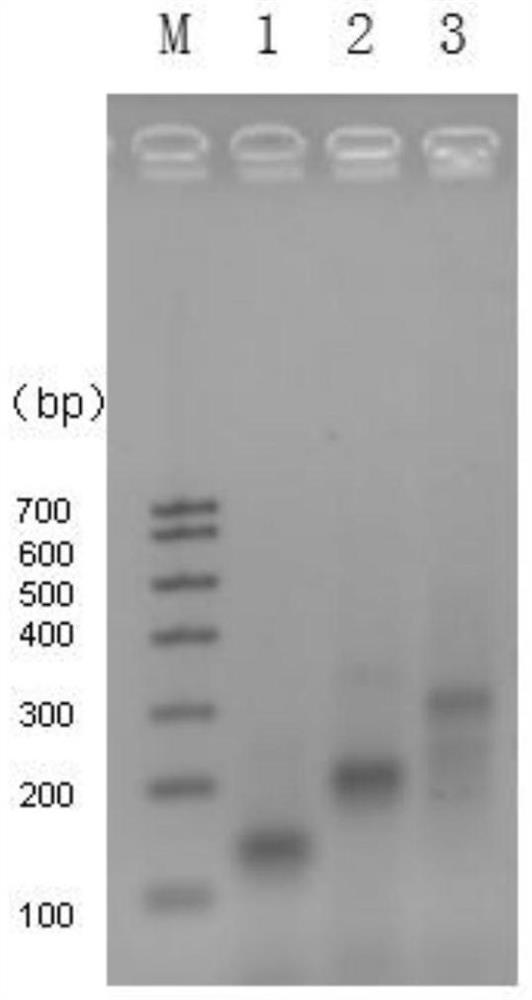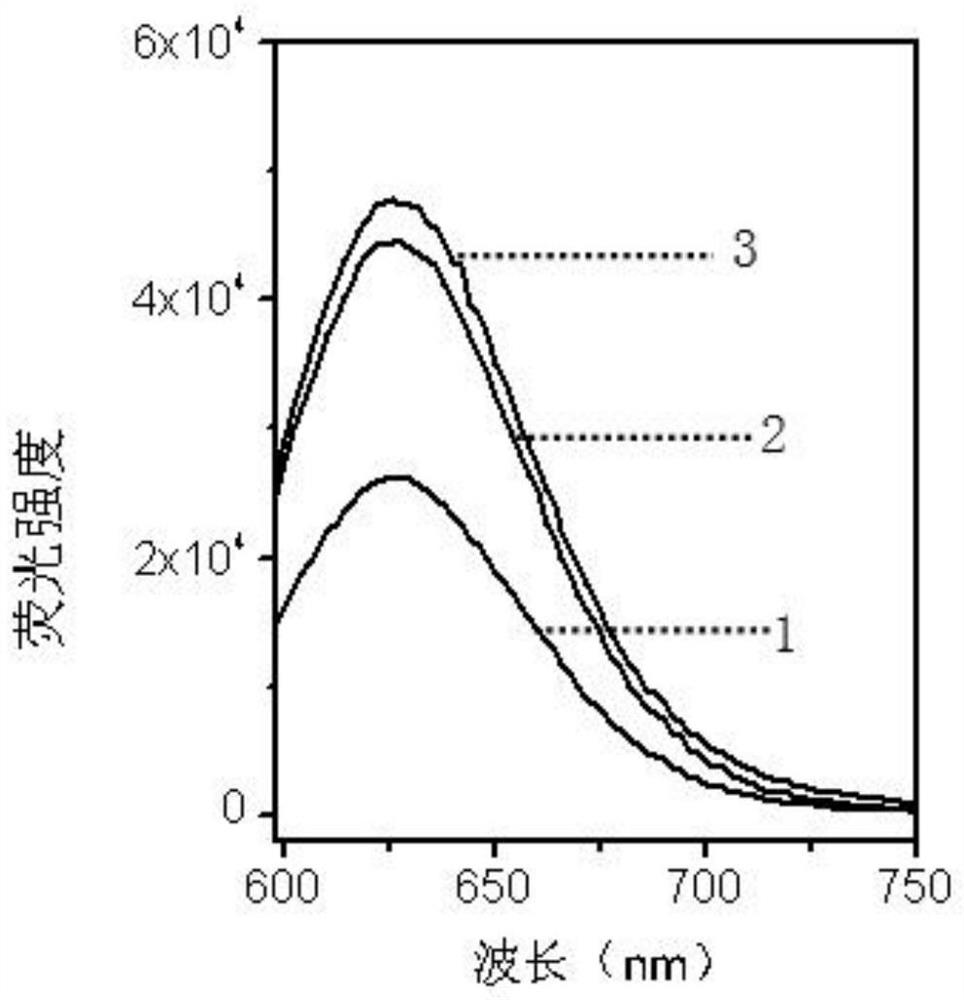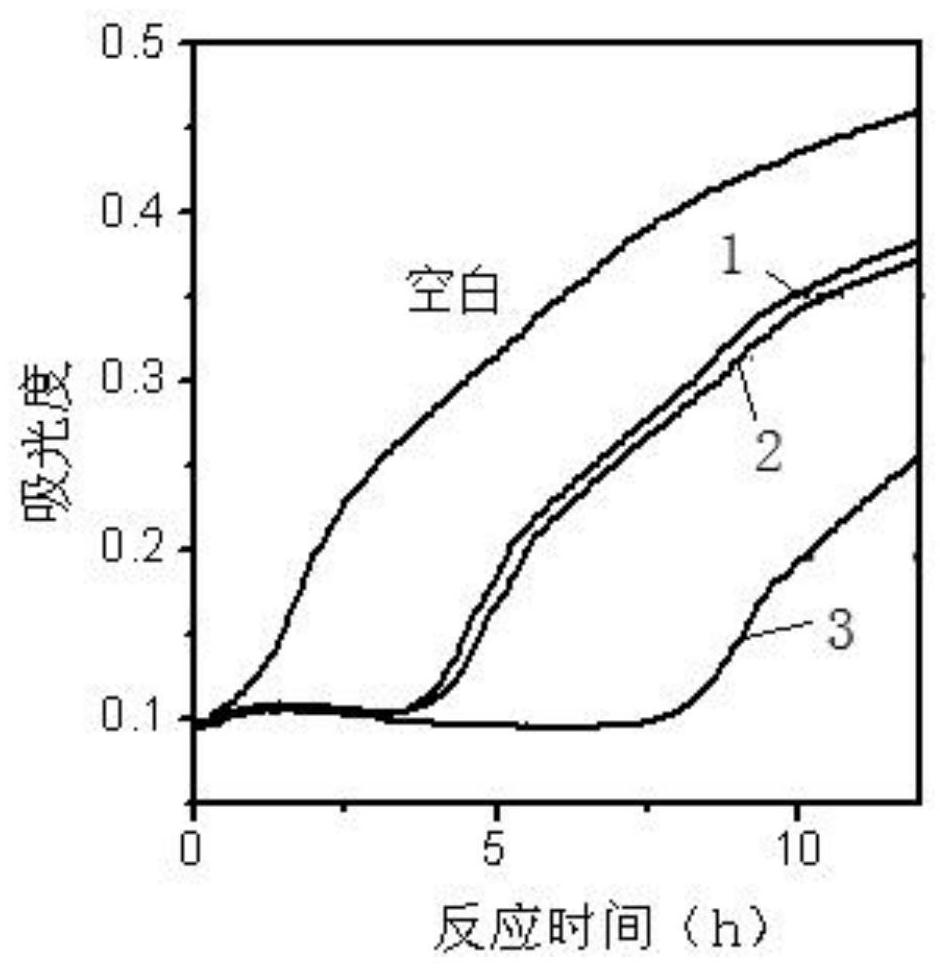Multi-branched nucleic acid nano-silver fluorescent clusters, preparation method and application
A nucleic acid nano and fluorophore technology, applied in the field of biofunctional fluorescent nanomaterials, can solve problems such as the inability to control the performance of nano silver clusters, and achieve the effect of strong fluorescence effect
- Summary
- Abstract
- Description
- Claims
- Application Information
AI Technical Summary
Problems solved by technology
Method used
Image
Examples
Embodiment 1
[0045] The preparation method of the first polydendron nucleic acid nano-silver fluorophore cluster comprises the following steps:
[0046] (1) According to the principle of complementary base pairing, design and synthesize three oligonucleotides, and name these three oligonucleotides as A 1 、A 2 and A 3 , used to form three branches of DNA each with the same cohesive ends;
[0047] The sequence consisting of 22 nucleotides of each sequence of the tridendritic oligonucleotide is a cohesive end;
[0048] A 1 、A 2 and A 3 The nucleotide sequences are shown in SEQ ID NO.1, SEQ ID NO.2 and SEQ ID NO.3, respectively.
[0049] SEQ ID NO.1:
[0050]
[0051] SEQ ID NO.2:
[0052]
[0053] SEQ ID NO.3:
[0054]
[0055] The sequence consisting of 22 nucleotides of the 5' of the above three sequences is a cohesive end;
[0056] The sequence (marked with dotted line) formed by the 23rd-36 nucleotides of the SEQ ID NO.1 sequence is reverse complementary to the sequence...
Embodiment 2
[0063] The preparation method of the first polydendron nucleic acid nano-silver fluorophore cluster comprises the following steps:
[0064] (1) with embodiment 1 step (1);
[0065] (2) with embodiment 1 step (2);
[0066] (3) Take the same volume of A with a volume of 20 μL 1 Aqueous solution, A 2 aqueous solution and A 3 Aqueous solution and 10 μL of 200 mM sodium chloride aqueous solution, supplemented with water to 100 μL, mixed evenly, heated to 90 ° C, cooled to room temperature, to obtain a three-dendritic DNA solution with the same sticky end in each branch;
[0067] (4) Take the three-dendritic DNA solution and the 3mM silver nitrate aqueous solution that each branch has the same sticky end, mix well, add the phosphate buffer solution of pH=6, stir for 30min, add the 3mM sodium borohydride aqueous solution, stir for 1h, Obtain the first multi-dendritic nucleic acid nano-silver fluorescent cluster;
[0068] The molar ratio of the three-branch DNA, silver nitrate an...
Embodiment 3
[0070] The preparation method of the first polydendron nucleic acid nano-silver fluorophore cluster comprises the following steps:
[0071] (1) with embodiment 1 step (1);
[0072] (2) with embodiment 1 step (2);
[0073] (3) Take the same volume of A with a volume of 30 μL 1 Aqueous solution, A 2 aqueous solution and A 3 Mix the aqueous solution with 10 μL of 200 mM sodium chloride aqueous solution, heat to 95°C, and cool to room temperature to obtain a three-dendritic DNA solution with the same sticky ends on each branch;
[0074] (4) Take the tridendritic DNA solution and 5mM silver nitrate aqueous solution that each branch has the same sticky end, mix well, add a phosphate buffer solution with pH=8, stir for 60min, add 5mM sodium borohydride aqueous solution, stir for 2h, Obtain the first multi-dendritic nucleic acid nano-silver fluorescent cluster;
[0075] The molar ratio of the three-branch DNA, silver nitrate and sodium borohydride that each branch has the same st...
PUM
 Login to View More
Login to View More Abstract
Description
Claims
Application Information
 Login to View More
Login to View More - R&D
- Intellectual Property
- Life Sciences
- Materials
- Tech Scout
- Unparalleled Data Quality
- Higher Quality Content
- 60% Fewer Hallucinations
Browse by: Latest US Patents, China's latest patents, Technical Efficacy Thesaurus, Application Domain, Technology Topic, Popular Technical Reports.
© 2025 PatSnap. All rights reserved.Legal|Privacy policy|Modern Slavery Act Transparency Statement|Sitemap|About US| Contact US: help@patsnap.com



